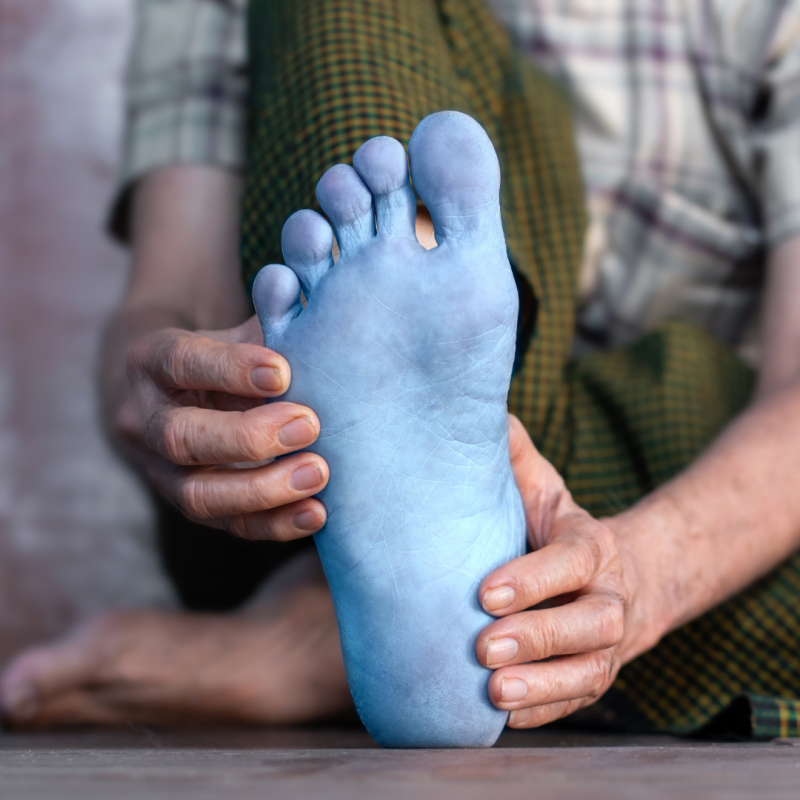By: Maya from Bollsen
Cold feet can be a persistent issue, especially during colder months or at night. Experiencing cold feet is not only uncomfortable but may also signal underlying health concerns, such as poor circulation or stress. This article explores the causes of cold feet and provides practical solutions to keep your feet warm and comfortable, whether you’re in bed, walking around, or dealing with cold toes during the night.
Why Do Cold Feet Occur?
Cold feet causes often stem from reduced blood flow to the extremities, which can be triggered by various factors. The body naturally prioritizes vital organs, especially in colder temperatures, leading to decreased circulation in the hands and feet. Other contributing factors include:
- Poor Circulation: Common in individuals with sedentary lifestyles or conditions like diabetes.
- Stress or Anxiety: Emotional stress can constrict blood vessels.
- Smoking: Nicotine narrows blood vessels, exacerbating poor circulation.
- Temperature Sensitivity: Some people naturally have lower tolerance to cold temperatures.
Understanding these root causes is crucial for finding effective solutions. Let’s explore remedies and preventive measures to combat cold feet in bed or during your day.
7 Tips to Prevent and Treat Cold Feet
1. Engage in Foot Exercises
One of the most effective cold feet treatments is regular foot movement. Stretching, flexing, and rotating your feet can improve blood flow and reduce cold toes. Simple exercises such as toe curls or foot circles can be done anywhere, boosting circulation to keep your feet warm.
2. Stay Hydrated
Dehydration can thicken your blood, making it harder for it to circulate efficiently to your extremities. Drinking adequate water or warm teas helps your body pump blood effectively, alleviating cold feet at night and throughout the day.
3. Adjust Your Sitting Position
Crossed or bent legs hinder blood circulation to the lower limbs. Instead, adopt an open and upright sitting posture to allow better blood flow. Regularly shifting positions also minimizes the chance of cold feet developing from restricted blood flow.
4. Quit Smoking
Smoking is a major contributor to poor circulation, as nicotine narrows the blood vessels. Long-term smoking can lead to chronic cold feet and even more severe vascular issues. Quitting smoking not only alleviates cold feet but improves overall health.
5. Relax and Reduce Stress
Stress and anxiety tighten blood vessels, making it difficult for blood to reach the feet. Activities like yoga, meditation, or gentle walks can reduce stress and improve circulation, combating cold feet at night or in bed.
6. Wear Properly Fitting Shoes
Ill-fitting shoes can compress your feet, restricting blood flow. Make sure your shoes offer enough room to accommodate thick socks if needed, without making your feet feel tight. Proper footwear plays a critical role in reducing cold toes and ensuring comfort throughout the day.
7. Use Insoles for Warmth and Support
Cold floors can exacerbate the issue of cold feet, especially during winter. Adding insulating insoles can provide a barrier against the cold. Products like BOLLSEN Insoles, made with soft Poron® material, offer both warmth and cushioning, making them an excellent cold feet treatment option. Thin and flexible, they fit into almost any shoe while offering superior insulation.
Cold Feet at Night: Special Considerations
Cold feet at night are particularly bothersome as they can disrupt sleep. To address this:
Cold feet at night are particularly bothersome as they can disrupt sleep. To address this:
- Warm Socks: Invest in thermal or wool socks designed for cold climates.
- Heating Pads: Place a warm pad or hot water bottle near your feet before bedtime.
- Elevate Your Feet: Elevating your feet slightly can promote blood flow, helping prevent cold toes.
- Room Temperature: Maintain a comfortable temperature in your bedroom to avoid triggering cold feet in bed.
When to Seek Medical Attention
While occasional cold feet are normal, persistent symptoms could indicate a more serious underlying condition, such as:
- Raynaud’s Disease: A condition where small blood vessels constrict excessively in response to cold or stress.
- Peripheral Artery Disease (PAD): Reduced blood flow due to narrowed arteries.
- Nerve Damage: Often caused by diabetes or other conditions.
- Hypothyroidism: An underactive thyroid can reduce metabolism and blood flow, leading to cold extremities.
If you experience chronic cold feet accompanied by pain, discoloration, or numbness, consult a healthcare provider for a thorough evaluation.
Preventive Measures for Cold Feet
Besides the remedies mentioned, adopting a proactive approach can help prevent cold feet:
- Layer Up: Wear warm layers and keep your feet covered during colder months.
- Dietary Changes: Incorporate foods that improve circulation, such as ginger, garlic, and omega-3 fatty acids.
- Regular Exercise: Cardiovascular activities like walking or swimming enhance blood flow and reduce the frequency of cold feet.
- Avoid Prolonged Standing
Conclusion
Understanding the causes of cold feet is the first step toward managing and preventing the issue. From simple lifestyle adjustments like foot exercises and hydration to investing in high-quality insoles like BOLLSEN Insoles, there are numerous ways to keep your feet warm and comfortable. Remember, if cold feet persist despite trying these remedies, it’s essential to seek medical advice to rule out underlying health conditions.
Say goodbye to cold feet in bed, at night, or during your daily routine by taking proactive steps to improve circulation and stay warm!

